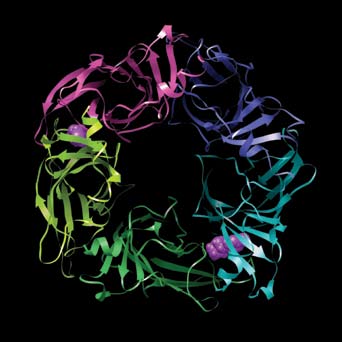A treatment, or perhaps even cure, for neurodegenerative disorders such as Parkinson’s, Alzheimer’s or autism could lie in managing a specific family of proteins that control messages sent to the brain.
The proteins, called neuronal nicotinic acetylcholine receptors (abbreviated nAChRs), are often located at nerve endings. They selectively bind to certain chemicals and are responsible for sending multiple types of signals to the body.
To look for medications or substances that will bind with a specific member of the nAChR family of proteins and block the damaging signals, Ohio State University biochemists are modeling the activities of known nAChR antagonists — chemicals that thwart nAChRs’ messages to the brain.
“Through this computationally intensive process, we are identifying — for the first time — which specific sites on the nAChR proteins will bind with a novel class of antagonistic compounds,” said Chenglong Li, Ph.D., an assistant professor in OSU’s College of Pharmacy. His collaborators are colleagues Ryan Pavlovicz and Dennis McKay, Ph.D.
Using the Ohio Supercomputer Center’s IBM Cluster 1350, they are building and studying, through molecular dynamics simulations, the functions of various nAChRs. Then, they computationally let molecular partners “dock” to each other and predict how one molecule will bind to another to form a functional complex.
“We can then use virtual, high-throughput screenings [millions of compounds] and fragment-based designs [thousands of specific compounds] at these sites to optimize and design new, highly selective and potent compounds that will better inhibit the debilitating actions of nAChRs, with minimum side effects,” Dr. Li added.
--
Project leads: Gregory Wiet, M.D, Nationwide Children's Hospital & The Ohio State University, & Don Stredney
OSC Research title: Validation/dissemination of virtual temporal bone dissection
Funding source: National Institute on Deafness & Other Communications
